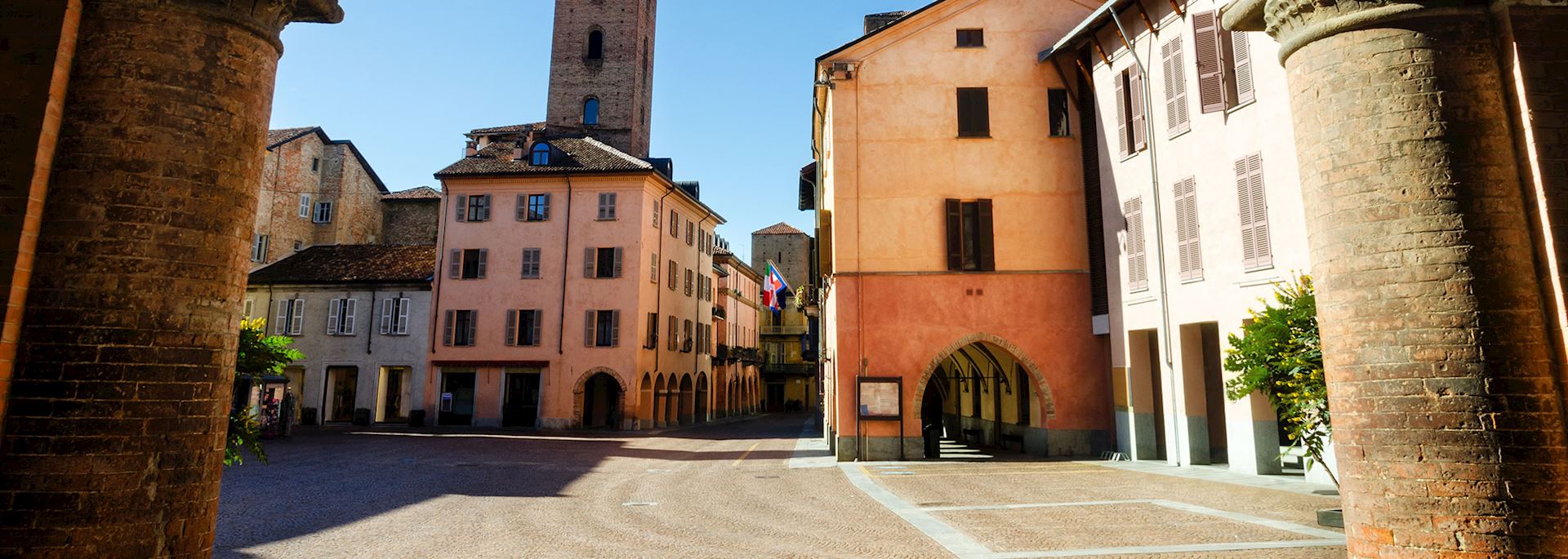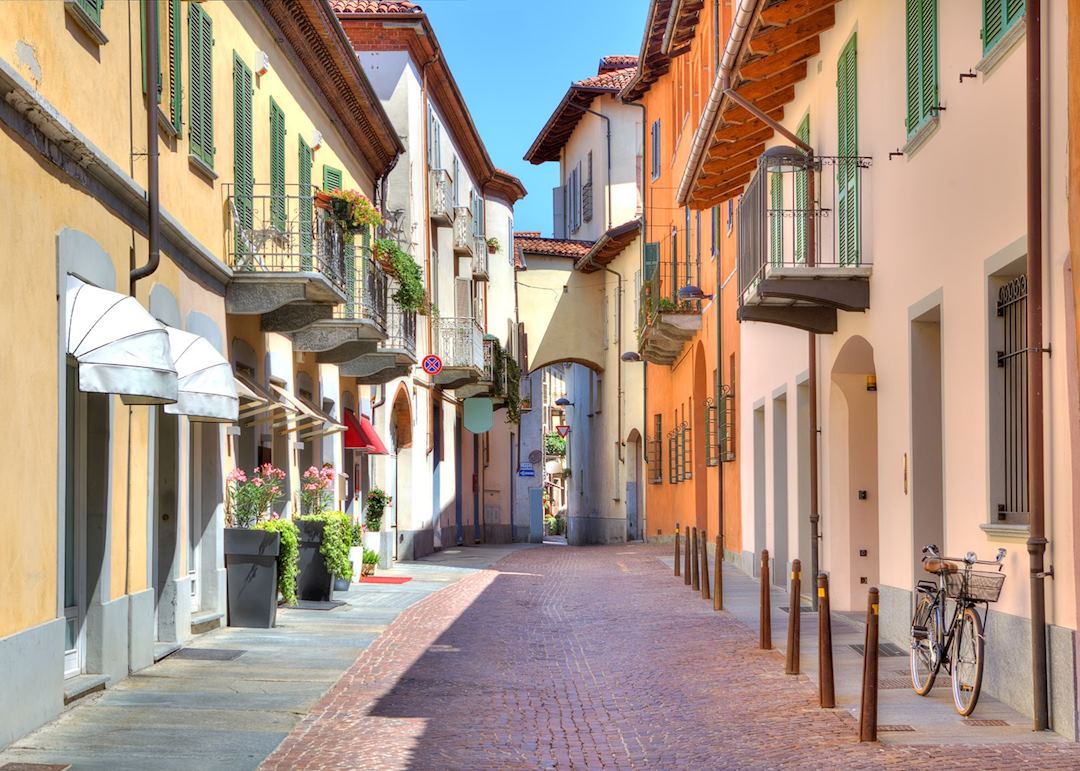Capital of Piedmont’s wine industry, Alba is dominated by its medieval red-brick towers and renowned for its fine cuisine. The town, the largest in the Langhe region, was once the hub of a powerful city-state. It dates back to pre-Roman times, with evidence suggesting vines were cultivated here as far back as the 5th century BC.
The gentle hills that surround the town are blanketed in vines, hazelnut groves and peach trees. They belong to a UNESCO-protected landscape, which lies an hour from Turin and offers a taste of history as well as gourmet Piedmont fare.
Sitting under the gaze of the distant Alps, Alba’s cobbled streets are lined with an impressive collection of palaces, townhouses and churches. It’s said the town once had 100 towers and, though this might never have been true, the skyline is still a jagged silhouette of towering spires, lookouts and steeples. After the fall of the Roman Empire, Alba was destroyed by the Saracens, but parts of its ancient city walls and one of the old Roman gates remain.
The town’s main sight is the late-Gothic duomo on Piazza Risorgimento, a dusky pink edifice with a 12th-century belfry and 16th-century wood-carved chorus. Nearby is the town hall. From here, you can wander along Via Vittorio Emanuele, which is lined with shops, cafés, delicatessens and restaurants celebrating the region’s rich agricultural bounty.
Some of Italy’s finest red wines, including Barbaresco, Barolo and La Morra, originate from the hills around Alba, and you’ll find plenty of wine shops to browse. The region is also renowned for its truffles, mushrooms, cheeses and hazelnuts. Along with seeking out these products in the shops, it’s well worth taking a stroll around the fresh-food market on a Saturday morning.
At the far end of Via Vittorio Emanuele, you come to the neoclassical-style Piazza Michele Ferrero, a grand and stately square recently renamed after the town’s billionaire confectioner Michele Ferrero. Michele’s father, Pietro, had a bakery in Alba and came up with the idea of adding oil to his Pasta Gianduja, a solid cocoa and hazelnut paste, to make it more spreadable. Michele rebranded the paste as Nutella and started a global sales empire. The Ferrero factory that produces Nutella, as well as Ferrero Rocher, is still in Alba.
Along with wine and hazelnuts, truffles are the region’s biggest crop, with Alba especially known for the quality of its white truffles. In late October and early November, the town holds a truffle fair, attracting buyers and visitors from around the globe. Fairgoers are entertained with medieval pageantry and a donkey race that parodies the palio (horse race) in nearby Asti, Alba’s historic rival.
Once you’ve explored the town, it’s well worth setting out on foot or by bicycle to take in the surrounding hills, vineyards and wine cellars. You can also visit nearby Barolo or Barbaresco.
Best time to visit
Alba is a year-round destination, but the weather is warmer from April to October. July and August are the hottest months. The town hosts many festivals, including a wine festival in late April/early May, where you can taste 500 local wines. The Alba Music Festival runs in late May/early June, and you can also time your visit for a jazz festival in June.
who's been there
-
01993 838 92501993 838 960
- Make an enquiry
Places near Alba
- Barbaresco less than 5 miles away
- Barolo 8 miles away
- Piedmont 27 miles away
- Turin 31 miles away
- Genoa 50 miles away
- Portofino and Santa Margherita 65 miles away
- Milan 78 miles away
- Stresa 86 miles away
- Verbania 89 miles away
- Como 92 miles away
- Cinque Terre 94 miles away
- Blevio 95 miles away
- Torno 96 miles away
- Lake Maggiore 96 miles away
- Laglio 98 miles away
- Porto Venere 100 miles away
- Lezzeno 103 miles away
- Tremezzo 106 miles away
- Bellagio 108 miles away
- Lake Como 111 miles away
- Parma 113 miles away
- Forte dei Marmi 118 miles away
- Pisa 136 miles away
- Sirmione 137 miles away
- Gardone Riviera 139 miles away
- Lake Garda 142 miles away
- Modena 143 miles away
- Verona 154 miles away
- Bologna 164 miles away
- Madonna di Campiglio 172 miles away
- San Gimignano 172 miles away
- Florence 173 miles away
- Siena 190 miles away
- Ravenna 207 miles away
- Venice 216 miles away
- Dolomites 219 miles away
- Alta Badia 228 miles away
- Perugia 244 miles away
- Orvieto 246 miles away
- Umbria 254 miles away
- Assisi 255 miles away
- Costa Smeralda 259 miles away
- Rome 297 miles away


